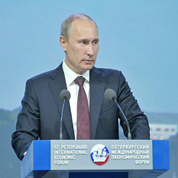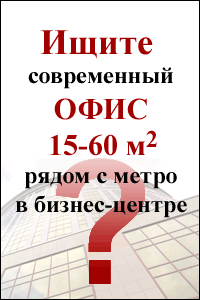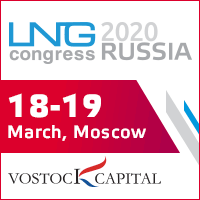New privatization arouses the ugly ghosts from failed wild 1990s policies

These assets include lucrative state companies that have been “earmarked for fast-track privatizations in 2012 and also other gigantic industry domineering government corporations, where the Kremlin intends to either reduce its overwhelming stockholdings to blocking stakes and/or marginal presence or full exits by 2016.
One of the reasons behind the Kremlin’s sale-spree magnanimity, apart from the trillions of rubles to be generated in the procedure for the state coffers, stems from the necessity to finally hearken to investors’ incessant condemnation of the “state’s excessive presence” in the domestic economy as detrimental to Russia’s businesses growth, diversification and competitiveness both at home and on the international markets.
Such responsiveness to investors’ criticism deserves a total support, if not for the lingering ghosts of the past privatization policies. The 1990s wholesales saw a select group of “highly connected individuals” — conniving via criminal alliances with state officials overseeing the sell-offs of the defunct Soviet Union’s assets — acquire these properties at infinitesimal fractions of their market values or even totally free-of-charge. In most odious cases, the new class of future Russian capitalism titans even used the state money, as “special loans” to pay for these companies during the so-called “loan-for-share auctions.”
By all definitions, this was a highly controversial, if not outright criminal policy, since the privatization policy was designed to generate more funds for the cash-starved government that was tethering on the brink of imminent bankruptcy in the 1990s. These machinations later earned the privatization policy, the state officials behind it, as well as their cohorts in the private business sector that later became known as “the oligarchs” such nasty labels as "catastroika,” “the daylight robbers of Russians,” “the authors of the greatest economic vandalisation of state assets in human history,” "most cataclysmic peacetime economic collapse of an industrial country in recent memory" and several other unprintable epithets.
Indeed, even today, almost 20 years later, the outcomes of the rigged 1990s privatizations are still a highly contentious and polarizing issue in the Russian society, stirring up strong emotional sentiments among the population, especially, among the older generations. Putin is well aware of these acrimoniously negative memories associated with the first round of privatization, hence his promise to make the second version “a much fairer and clearer policy in all ramifications” to the Russian citizens. This is especially true for the older generation that created the Soviet industrial assets, which have now become the exclusive properties of a select few that are using them to fund luxurious lifestyles at the expense of the majority.
The new privatization will have nothing whatsoever in common with the policy of the 1990s that were characterized by blatant favoritism, proximity to political power, artificially lowering of assets’ market values and using of state’s funds to bankroll such acquisitions through questionable deal structures, Putin told the St. Petersburg Economic Forum delegates in June. He also noted that Russians’ persistent negative attitudes to the 1990s privatization policy and their non-acceptance of its outcomes were fully justified as it is extremely difficult to demand that citizens respect the wealth obtained in such questionable manner or the individuals behind them. The fairness of the second phase of privatization, which will be completely devoid of the fallacies of the first phase, is to ensure that the new policy and the new beneficiaries of the assets that will be sold during the process are well received by citizens. This is necessary so as to sever the “umbilical cord between properties and political authorities” in the country. It is also an anti-corruption strategy, the Kremlin further argues, as rampant graft solicitations by state officials have now become a real threat to the country’s physical existence as a sovereign geopolitical entity.
Also, the removal of these mono- or oligopolists from the government’s direct financial support along with their full demonopolization will force them into a real competitive market environment, where their goods and services will have to find their niches vis-a-vis those of other private industry players that had always been overwhelmed by the government’s financial might behind them. However, one must note here that all these objectives are standard, text-book benefits from classical, well-thought-through and corruption-free executed privatizations, such as the one done by Prime Minister Margaret Thatcher in the United Kingdom in the early 1980s. Needless to say, that after the initial unavoidable inhuman hardships, the UK economy rebounded in the post-privatization era to the pinnacle of the global economy and has remained there since the post-Thatcher premiership era.
But Putin’s second phase of privatization will not be able to generate such positive outcomes and material benefits for the country, its citizens and economy, again because of the negative historical background. This could have been ameliorated if the president had first followed through with his valiant pre-election campaign promise of forcing the beneficiaries of “the 1990s pseudo-legal privatizations” to pay “some sorts of compensations” as a way of legitimizing “the non-too-clean methods” used in obtaining those assets during the dawn of the post-Soviet Russian model of capitalism in the “wild 1990s.”
The argument that the contemporary owners of such assets are, legally speaking, “conscientious, good faith or bona-fide acquirers of these assets,” if not completely faulty by definition, it is, at least, only partially true, as most of the present-day owners of these assets also got their so-called “initial capital” used to legally buy these assets in the post-privatization era through either these pseudo-legal privatization policies or their byproducts. It is unclear, and the Kremlin, as usual, has not explained, why Putin had backed down from this compensational approach to legitimization of the pseudo- or even outright criminal state asset privatization of the 1990s that had gained broad support across the society, including by the jailed oligarch, Mikhail Khodorkovsky (see the article “Khodorkovsky and Putin share a common view on legalization of privatization deals” in the March 2012 Edition).
Conventional sense dictates the negativities of the 1990s and associated wrongs ought to be fully righted before embarking on a similar policy in today’s Russia. This is why it will be a hard sell, even for the “omnipotent Putin,” to get the Russian populace to buy his wonderful idea that privatization, as a government’s policy, will ever be fair again in this country, at least, not by this present generation of Russians. The negative memories of the 1990s massive sales of state assets via questionable schemes are “still very raw and fresh” in the minds of Russians, especially those that were the direct victims of such policies, to believe in a corruption-free privatization of their government’s assets.
This is now a reputation issue for the Kremlin, and like all damaged reputations, only time and true willingness, rather than a verbally declared commitment for contrition, are the medications that usually do the wonders of turning people around. Such elements are currently not evident on the Kremlin’s second phase privatization agenda. The first step towards these objectives is for Putin to first finally and completely lay down “the roving ghosts” of the 1990s privatization to eternal rest before embarking on a second phase of a previously ill-executed policy.












 Web design,
Web design,